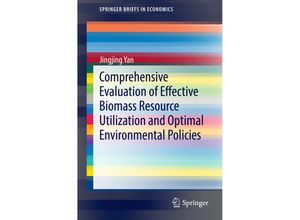This book adopts a linear optimization method and introduces a dynamic optimization simulation
model for analyzing synthetic environmental policies as endogenous variables in order to
improve the environment and provide more biomass energy. The model considers both the total
ecological system and the socio-economic situational changes. The purpose of the research is to
establish effective utilization methods for biomass resources as well as to coordinate resource
reutilization environmental conservation and economic development and ultimately to achieve
sustainable development of society. By selecting for examination a typical suburb of a major
city in China (Miyun County near Beijing) the book improves the simulation model and focuses
on the evaluation of water pollutant minimization based on the ecological value of Miyun
Reservoir. In the simulation the author takes into account the specific and unique
characteristics of China's economy and social state in terms of sustained economic growth rate
financial subordination relations and regional environmental policies all of which differ from
the model for Japan. Beyond these innovations the book introduces two advanced technologies
from Japan and China to the study area through simulation with integrated policies and
presents a regional analysis and allocation strategy for these technologies which have
demonstrated impressive operability in practice in light of the current conditions and limited
funds in China.

